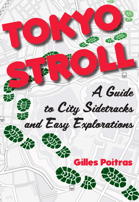
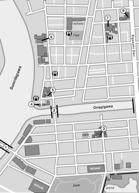

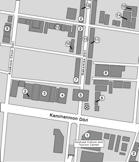

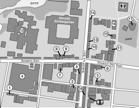






Tokyo Stroll Supplement: Hakusan / Koishikawa Area
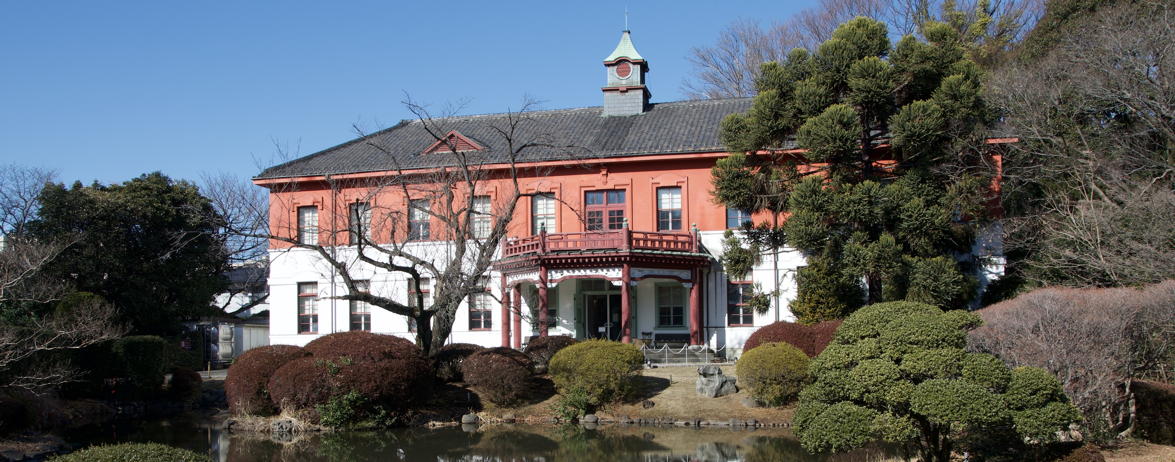
This page indexes, contains corrections and has additions to the Hakusan / Koishikawa Area chapter of Tokyo Stroll.
For information on Tokyo Stroll and this web supplement see Tokyo Stroll Supplement home page
For users of the Organic Maps, Maps.Me and Google Maps apps the items below have bookmarks you can import into those apps to make navigation easier.
Instructions and links are on the Viewing Locations in Organic Maps, Maps.Me, Google Maps, or Google Earth page.
Some entries on this page may include a note that says "Description to be added soon ." These entries are for items I felt should be listed even if the description is not ready to assist those who wish to plan a trip. When possible I included a link to an official web page, I suggest also doing web searchs for more information.
Bunkyō Civic Center (文京シビックセンター)
As you have walked through this part of Tokyo you may have occasionally noticed a large tall building to the South East. This is the building that houses the government offices for Bunkyō Ward, sometimes you will see it referred to as the Bunkyō City Hall. Once you are at the building take the elevator up to the 25th floor (Open: 9:00 – 8:30) observation deck where you can enjoy an excellent 330-degree view of the city. If it is a clear day you will have a good view of Mount Fuji beyond the skyscrapers of Shinjuku. You may even spot a few things in the neighborhood to explore if the sun is still up.
NEAREST TRAIN/SUBWAY STATIONS: Kasuga Station (Toei Mita Line, Toei Ōedo Line), Kōrakuen Station (Tokyo Metro Marunouchi Line, Tokyo Metro Namboku Line)
Denzūin (傳通院): Tokyo Stroll, Hakusan / Koishikawa Area Chapter, page 165
NEAREST TRAIN/SUBWAY STATION: Kasuga Station (Toei Mita Line, Toei Ōedo Line)
WEB: http://www.denzuin.or.jp
Enjōji (圓乘寺): Tokyo Stroll, Hakusan / Koishikawa Area Chapter, page 153
NEAREST TRAIN/SUBWAY STATION: Hakusan Station (Toei Mita Line)
Genkakuji (源覚寺): Tokyo Stroll, Hakusan / Koishikawa Area Chapter, page 166
NEAREST TRAIN/SUBWAY STATION: Kasuga Station (Toei Mita Line, Toei Ōedo Line)
WEB: https://www.genkakuji.or.jp
Hakusan Shrine / Hakusan Jinja (白山神社): Tokyo Stroll, Hakusan / Koishikawa Area Chapter, page 153
NEAREST TRAIN/SUBWAY STATION: Hakusan Station (Toei Mita Line)
Harimazaka (播磨坂): Tokyo Stroll, Hakusan / Koishikawa Area Chapter, page 156
NEAREST TRAIN/SUBWAY STATION: Myōgadani Station (Tokyo Metro Marunouchi Line)
Hikawa Shrine / Hikawa Jinja (簸川神社): Tokyo Stroll, Hakusan / Koishikawa Area Chapter, page 159
NEAREST TRAIN/SUBWAY STATIONS: Hakusan Station (Toei Mita Line), Myōgadani Station (Tokyo Metro Marunouchi Line)
Jigenin (慈限院): Tokyo Stroll, Hakusan / Koishikawa Area Chapter, page 164
NEAREST TRAIN/SUBWAY STATION: Kasuga Station (Toei Mita Line, Toei Ōedo Line)
Jirō Inari Shrine / Jirō Inari Jinja (次郎稲荷神社): Tokyo Stroll, Hakusan / Koishikawa Area Chapter, page 158
NEAREST TRAIN/SUBWAY STATIONS: Hakusan Station (Toei Mita Line), Myōgadani Station (Tokyo Metro Marunouchi Line)
Koishikawa Annex, Museum of Architecture, The University Museum, The University of Tokyo / Tōkyō-daigaku Sōgō Kenkyū Hakubutsukan Koishikawa bun’in (東京大学総合研究博物館 小石川分館): Tokyo Stroll, Hakusan / Koishikawa Area Chapter, page 158
NEAREST TRAIN/SUBWAY STATIONS: Hakusan Station (Toei Mita Line), Myōgadani Station (Tokyo Metro Marunouchi Line)
WEB: https://www.um.u-tokyo.ac.jp/architectonica/index_en.html
Koishikawa Botanical Garden / Koishikawa Shokubutsuen (小石川植物園): Tokyo Stroll, Hakusan / Koishikawa Area Chapter, page 156
NEAREST TRAIN/SUBWAY STATIONS: Hakusan Station (Toei Mita Line), Myōgadani Station (Tokyo Metro Marunouchi Line)
WEB: https://koishikawa-bg.jp
Koishikawa Kōrakuen (小石川後楽園)
A garden which was laid out in 1629 on the Mito Han estate by Tokugawa Yorifusa, his son Tokugawa Mitsukuni would oversee the completion of the work. An advisor on the construction of the garden was Zhu Zhiyu a noted Confucian scholar and refugee from China after the fall of the Ming Dynasty. It was he who gave the garden its name. Today this is the oldest garden in Tokyo Some noted features of the garden include the ponds, streams, manmade hills, older structures, bridges of stone or wood, many pathways, flowers, and a rice paddy for teaching how hard farmers worked which is still planted and harvested by school children today. Specifics on much of this can be found in the brochure given out at the garden. The garden is also known for Autumn foliage starting in late November, plum blossoms in February, cherry blossoms in late March, azaleas in April-May, and more than one type of iris in mid-April-June.
NEAREST TRAIN/SUBWAY STATION: Kōrakuen Station (Tokyo Metro Marunouchi Line, Tokyo Metro Namboku Line)
PDF: http://www.kensetsu.metro.tokyo.jp/content/000026922.pdf
Mansei (萬盛): Tokyo Stroll, Hakusan / Koishikawa Area Chapter, page 164
NEAREST TRAIN/SUBWAY STATION: Kasuga Station (Toei Mita Line, Toei Ōedo Line)
Nensokuji (念速寺): Tokyo Stroll, Hakusan / Koishikawa Area Chapter, page 159
NEAREST TRAIN/SUBWAY STATION: Kasuga Station (Toei Mita Line, Toei Ōedo Line)
Rinsenji (林泉寺)
This temple has an unusual type of Jizō statue, a shibarare Jizō, a "bound Jizō" which dates from 1602. This refers to a practice that started in the Edo Period of tying a string around a statue of Jizō as part of a prayer, when the prayer is answered the string is to be removed. Originally at this temple it was for the recovery of stolen or lost property, now people do for pretty much anything.
NOTE: The shibarare Jizō of Rinsenji is mentioned by Kodō Nomura in one of his Zenigata Heiji stories.
NEAREST TRAIN/SUBWAY STATION: Myōgadani Station (Tokyo Metro Marunouchi Line)
Shinjuin (真珠院): Tokyo Stroll, Hakusan / Koishikawa Area Chapter, page 166
NEAREST TRAIN/SUBWAY STATIONS: Kasuga Station (Toei Mita Line, Toei Ōedo Line), Myōgadani Station (Tokyo Metro Marunouchi Line)
Sōkeiji (宗慶寺): Tokyo Stroll, Hakusan / Koishikawa Area Chapter, page 156
NEAREST TRAIN/SUBWAY STATION: Myōgadani Station (Tokyo Metro Marunouchi Line)
Takuzōsu Inari Shrine / Takuzōsu Inari Jinja (澤蔵司稲荷): Tokyo Stroll, Hakusan / Koishikawa Area Chapter, page 164
NEAREST TRAIN/SUBWAY STATION: Kasuga Station (Toei Mita Line, Toei Ōedo Line)
WEB: https://takuzousuinari.com
Tarō Inari Shrine / Tarō Inari Jinja (太郎稲荷神社): Tokyo Stroll, Hakusan / Koishikawa Area Chapter, page 156
NEAREST TRAIN/SUBWAY STATIONS: Hakusan Station (Toei Mita Line), Myōgadani Station (Tokyo Metro Marunouchi Line)
Tokyo Dome City (東京ドームシティ)
[South of the area in the Hakusan / Koishikawa Detail 4 map, near Kōrakuen Station]
A large modern entertainment complex founded in 1955 which has been added to and changed many time since. Included are the Tokyo Dome baseball stadium, the Japanese Baseball Hall of Fame, a hotel, an amusement park, a bowling alley, a hotel, roller skating arena, a large theater, the hot spring La Qua, various other attractions, and the location of ever changing special events. This modern entertainment district provides quite the contrast to the many older sights found in Bunkyō Ward.
WEB: https://www.tokyo-dome.co.jp
Ushi Tenjin Kitano Jinja (牛天神北野神社)
Founded in 1184 by Minamoto no Yoritomo, the first Kamakura shogun. Yoritomo had a dream in which Sugawara no Michizane standing on a cow shaped stone informed him two important events would take place. The shrine was then constructed as thanks.
The main entrance to the shrine grounds is to the East where there is a long stairway to the shrine. The shrine itself is an older wooden structure with some impressive komainu statues. The grounds are known for a ume blossom flower viewing festival early in the year. On the grounds you will see a sacred stone in straw rope enclosure, and a tall memorial stone to Nakajima Utako famous poet and instructor to many writers including Ichiyō Higuchi and Miyake Kaho. The memorial to Utako was put up after her death in 1903.
Enter on the West through a long pedestrian street and stairway.
NEAREST TRAIN/SUBWAY STATIONS: Kasuga Station (Toei Subway Mita Line, Toei Subway Ōedo Line),
Kōrakuen Station (Tokyo Metro Marunouchi Line, Tokyo Metro Namboku Line)
WEB: http://ushitenjin.jp
Zenkōjizaka Mukunoki Tree / Zenkōjizaka no Mukunoki (善光寺坂のムクノキ): Tokyo Stroll, Hakusan / Koishikawa Area Chapter, page 164
NEAREST TRAIN/SUBWAY STATION: Kasuga Station (Toei Mita Line, Toei Ōedo Line)
Back to the Tokyo Stroll Supplement home page - Privacy Notice - Back to Gilles' home page
Created July 10, 2919 | Content last updated June 14, 2025